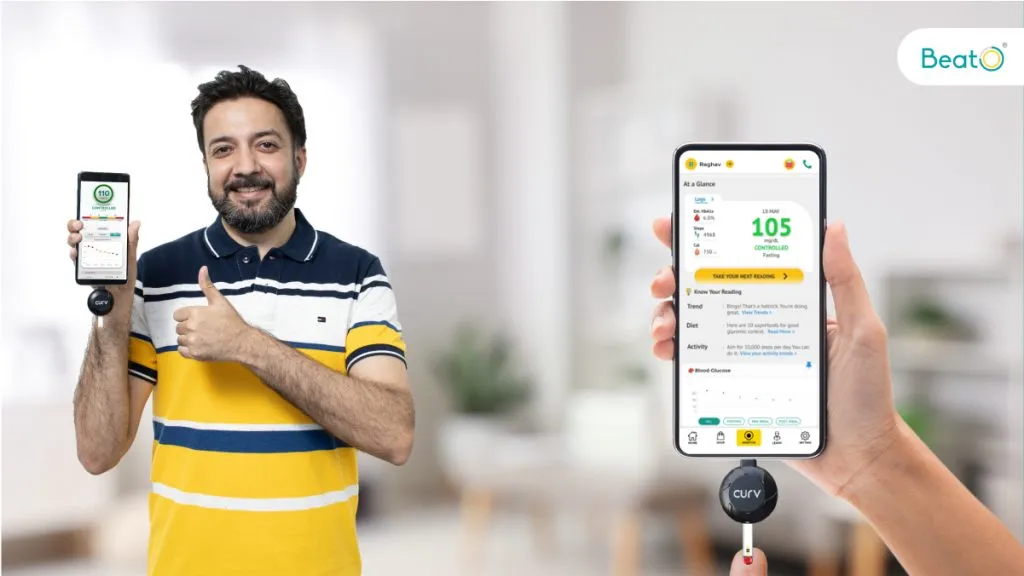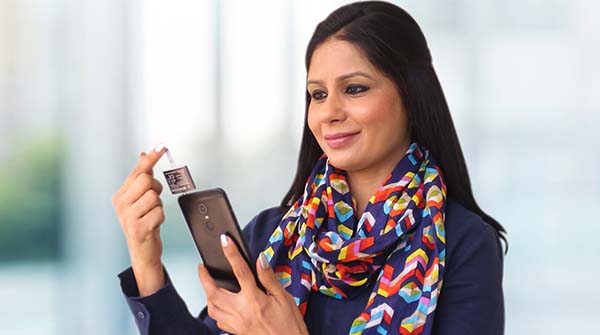As we age, managing diabetes becomes a tricky journey and guess what is tricker is understanding the role of glucometer in managing diabetes in elderly individuals. A glucometer is a device specially designed to measure blood glucose levels and plays a vital role in the lives of millions of people worldwide, especially elderly people. In this guide, we’ll explore the significance of glucometers in the lives of the elderly, offering insights and tips on effectively navigating this aspect of diabetes care.

Understanding the Role of Diabetes Check Machines
Glucometers, often referred to as diabetes check machines, are indispensable tools in the proactive management of diabetes, especially among the elderly. These compact devices, utilizing advanced technology, provide an accessible and efficient means to monitor blood glucose levels. Let’s delve deeper into their significance and how they empower the elderly in their diabetes care journey.

- Precision in Blood Glucose Monitoring: Glucometers are engineered to deliver accurate and real-time readings of blood glucose levels. The precision of these devices is crucial for individuals with diabetes, allowing them to make informed decisions about their diet, medication, and overall lifestyle. Accurate readings are the cornerstone of effective diabetes management, particularly in the elderly, where health parameters can be more delicate.
- Empowering Self-Monitoring: One of the remarkable aspects of glucometers is their ability to empower the elderly to participate actively in their diabetes care. Unlike when individuals had to rely solely on healthcare providers for periodic tests, glucometers facilitate user-friendly self-monitoring. This not only promotes a sense of independence and autonomy but also encourages a proactive approach to health. The elderly can conveniently perform blood glucose tests in the comfort of their homes, fostering a more engaged and empowered mindset toward managing their diabetes.
- Immediate Feedback for Informed Decision-Making: Glucometers provide immediate feedback, offering a snapshot of current blood glucose levels. This instant information is invaluable for the elderly, enabling them to make on-the-spot decisions about their health. Whether it’s adjusting insulin doses, modifying their meal plan, or recognizing the impact of physical activity, the real-time nature of glucometer readings empowers seniors to make informed choices that directly impact their well-being.
Read More: How To Reduce Blood Sugar Levels Immediately? A Step-by-Step Guide
- Reducing the Risk of Complications: Consistent use of glucometers contributes to reducing the risk of diabetes-related complications, a concern that becomes more pronounced with age. By closely monitoring blood glucose levels, the elderly can proactively address any fluctuations and work collaboratively with healthcare professionals to adjust their diabetes management plan. This proactive approach plays a pivotal role in preventing complications such as cardiovascular issues, neuropathy, and kidney problems, promoting overall health and longevity.
- User-Friendly Features for the Elderly: Recognizing the diverse needs of the elderly population, many glucometers are designed with user-friendly features. Large, easy-to-read displays, simple navigation, and ergonomic design considerations cater to the specific requirements of seniors. The goal is to make the process of blood glucose monitoring as accessible and stress-free as possible, ensuring that elderly individuals can comfortably integrate this essential task into their daily routines.
In summary, glucometers are not just devices; they are companions in the diabetes management journey, particularly for the elderly. Their precision, empowerment capabilities, immediate feedback, risk-reducing benefits, and user-friendly features collectively make them indispensable tools for promoting the well-being and autonomy of seniors living with diabetes.
Read More: From Genes to Lifestyle: What Causes Diabetes?
Choosing the Right Glucometer Kit
Selecting the appropriate diabetes test machine, commonly known as a glucometer kit, is a crucial step in ensuring effective blood glucose monitoring, especially for the elderly.
- Consider Ease of Use- When evaluating glucometer kits, prioritize user-friendliness, particularly for the elderly. Look for devices with large, clear displays and simple navigation buttons. A backlit display can be especially beneficial for those with visual impairments, ensuring that the readings are easily visible in various lighting conditions. Additionally, tactile buttons or audible cues can enhance accessibility for seniors with dexterity challenges.
- Explore Bluetooth Connectivity- In the era of smart technology, glucometers with Bluetooth capabilities offer a seamless way to integrate blood glucose monitoring into the daily lives of the elderly. Consider devices that can wirelessly sync data with smartphones or other devices. This not only simplifies the process of tracking readings but also facilitates remote monitoring by healthcare professionals and family members, fostering a collaborative approach to diabetes care.
- Test Strip Compatibility- Glucometers rely on test strips to analyze blood samples. Ensure that the chosen device is compatible with readily available and affordable test strips. Some glucometer models may have proprietary strips, which could be a consideration for long-term affordability and accessibility. Compatibility with a range of test strip options can provide flexibility for the elderly to choose based on their preferences and budget.
- Memory and Data Storage- Memory features in glucometers are beneficial for tracking trends and sharing data during healthcare appointments. Opt for a device with ample memory capacity, allowing seniors to store a significant number of readings before needing to clear or transfer the data. Some advanced models even come with features like trend analysis, which can be particularly useful for identifying patterns in blood glucose levels over time.
- Cost Considerations- Affordability is a key factor, especially for elderly individuals on fixed incomes. While advanced features can be beneficial, it’s essential to balance functionality with cost considerations. Many reliable glucometer options are available at various price points, and some manufacturers offer assistance programs or discounts. Consider the long-term cost of test strips and other consumables associated with the glucometer when making a decision.
- Accessibility of Customer Support- When choosing a glucometer kit, consider the accessibility and responsiveness of customer support services. This becomes crucial in case the elderly user encounters any issues or has questions about the device. Look for brands with user-friendly manuals, online resources, and responsive customer support to ensure a smooth and supportive experience for the elderly user.
- Reviews and Recommendations- Explore user reviews and seek recommendations from healthcare professionals. Real-world experiences shared by other seniors can provide valuable insights into the practical aspects of using a particular glucometer. Healthcare professionals can offer guidance based on the specific needs and health conditions of the elderly individual, helping them make an informed decision.
Choosing the right glucometer kit involves thoughtful consideration of features that align with the unique needs of the elderly.
Using the Glucometer Effectively
Effectively utilizing a glucometer is essential for accurate blood glucose monitoring, especially for the elderly. In this section, we delve into practical tips to ensure precise readings and a smooth testing experience:
- Proper Hand Hygiene- Before initiating a blood glucose test, emphasize the importance of proper hand hygiene. The elderly should wash their hands with soap and water, ensuring the removal of any residue that might interfere with accurate readings. Alternatively, alcohol wipes can be used to sanitize the testing site. Clean hands contribute to reliable results and prevent contamination.
- Site Rotation for Consistent Readings- Encourage the practice of site rotation when selecting the finger for blood sampling. Continuous testing on the same site may lead to calloused areas, affecting the accuracy of readings. Rotating between different fingers and sides helps maintain the sensitivity of the testing sites, ensuring consistent and reliable blood glucose measurements over time.
- Understanding the Impact of External Factors- Educate the elderly about external factors that can influence blood glucose readings. Stress, illness, dehydration, and certain medications can impact blood sugar levels. By being aware of these factors, individuals can better interpret their readings and communicate effectively with healthcare professionals. Stress the importance of noting any significant factors in a testing log for comprehensive self-monitoring.
Read More: Travelling with Diabetes: 5 Tips for Using a Glucometer on the Go
- Adequate Blood Sample Size- Ensure that seniors are using an adequate blood sample size for testing. Many glucometers require a small droplet of blood, and the device may not provide accurate results if the sample is too small. Encourage users to follow the instructions provided by the glucometer regarding sample size, as this contributes to the reliability of readings.
- Timing of Blood Glucose Testing- Highlight the significance of timing when conducting blood glucose tests. Different tests may be recommended at various times of the day, such as fasting tests in the morning or post-meal tests. The timing of tests can provide valuable insights into how the body responds to food and medication, aiding in the adjustment of treatment plans for optimal diabetes management.
- Consistent Testing Conditions- Consistency in testing conditions is crucial for accurate monitoring. Advise the elderly to maintain a consistent testing routine, including the time of day and environmental conditions. Factors like temperature and humidity can impact the performance of the glucometer, so testing in a consistent environment contributes to reliable readings.
- Calibrating the Glucometer- Some glucometers may require periodic calibration to ensure accuracy. Familiarize the elderly user with the calibration process outlined in the device’s manual. Regular calibration, if necessary, helps maintain the precision of the glucometer and ensures that it remains a trustworthy tool for blood glucose monitoring.
By instilling proper testing practices, understanding external influences, emphasizing hand hygiene, encouraging site rotation, ensuring an adequate blood sample size, emphasizing the timing of tests, promoting consistent testing conditions, and educating about calibration procedures, the elderly can master the art of using a glucometer effectively. These practices not only enhance the accuracy of readings but also contribute to a seamless and reliable blood glucose monitoring experience for seniors managing diabetes.
Read More: Managing Diabetes in the Elderly: A Complete Self-Care Guide
As we conclude this guide, it’s evident that glucometers play a pivotal role in the effective management of diabetes among the elderly. By understanding their significance, choosing the right glucometer kit tailored to the unique needs of seniors, and mastering the art of effective usage, we empower our elderly loved ones to navigate their diabetes journey with confidence. Accurate monitoring is not just a task; it’s a pathway to informed decisions and proactive well-being.
Disclaimer:The content of this article is compiled information from generic and public sources. It is in no way a substitute, suggestion, or advice for a qualified medical opinion. Always consult a specialist or your own doctor for more information. BeatoApp does not claim responsibility for this information
Throw out your non-verified glucometer and try the BeatO clinically approved smartglucometerkit. Check your blood sugar level instantly. Try out the BeatO diabetes care programfor a more organized healthcare routine.
Looking for a seasoned diabetologist? ChooseDr. Navneet Agarwal, an expert with 25+ years of experience. His specialisation in diabetology and obesity management provides personalised care. Elevate your health with a doctor’s recommendedglucometer, buy now.




